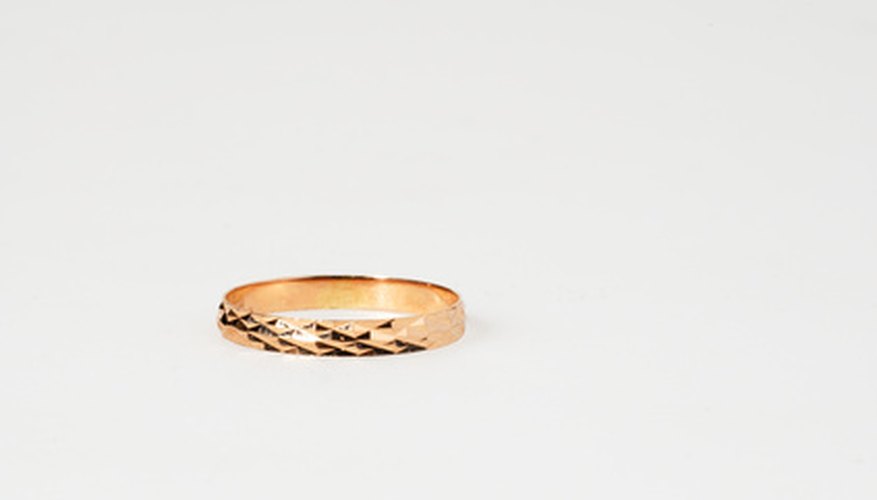Gold has been a sign of wealth and affluence for almost the entirety of recorded history. A sought-after treasure of Egyptian pharaohs, medieval kings and modern man, this precious metal has long been adored for its timeless lustre and ability to resist the ravages of time. Historically, gold has primarily been used as currency or in jewellery and other adornments. While gold currency is no longer used, gold is the "metal of choice" for jewellery making. Identifying the age of gold jewellery, like rings for example, is usually a task for an expert. However, a little education can help the average consumer discern when that "antique" ring they're looking at is really an antique.
- Gold has been a sign of wealth and affluence for almost the entirety of recorded history.
- Identifying the age of gold jewellery, like rings for example, is usually a task for an expert.
Examine the ring's condition. Older rings are more likely to show wear than newer rings or reproductions.
Check the ring for any markings, using a loupe or magnifying tool of your choice. Maker's marks are typically found on the inside of the band, in small print. The National Stamping Act requires all gold or silver marked for quality to be trademarked, or stamped with the maker's name. Should this marking exist, the ring was likely made sometime after 1906.
Make note of the hallmark, if one is present. This mark denotes the purity of the gold in carats. For example, "18K" means that the ring is made from 18 carat gold. If the ring is marked with "KP" instead of simply "K," the ring's age can be determined to be sometime after 1981, as the U.S. National Stamping Act was amended in 1981. The amendment included this "P" to designate the gold as "plumb," meaning the gold content is exactly as stated, to within .003 carat. If the ring only exhibits a mark of gold quantity and no maker's name, there are two possibilities: the ring predates 1906 and the National Stamping Act, or it was produced outside of the United States. To determine the latter, references listing foreign maker's marks and stamping laws will be needed.
- Check the ring for any markings, using a loupe or magnifying tool of your choice.
- If the ring is marked with "KP" instead of simply "K," the ring's age can be determined to be sometime after 1981, as the U.S. National Stamping Act was amended in 1981.
Consult a jewellery style guide after examining the ring for markings. This will not only help verify your conclusions but also help you determine the ring's value.
TIP
Take time to study jewellery styles of the time period you're interested in or to get a good general understanding of styles throughout various time periods. A strong base of knowledge can prevent you from walking away with an "antique" reproduction. While learning to identify antique jewellery by the maker's mark alone is useful, don't rely entirely on memory. Carry a quick reference of maker's marks with you when you hunt for antique jewellery so that you have a reliable source to fall back on. Years of wear can make markings more difficult to read. Always make sure you have a magnifying tool with you, to make reading markings easier. Bear in mind that "old" and "antique" are not the same thing. To qualify as an antique, the ring must be at least 100 years old.
WARNING
Some dealers may try to sell reproduction jewellery as authentic antiques. Be certain that a piece is authentic before you invest your money in it. Unmarked gold is a risky investment; the purity of the metal, the age of the piece, and the origin of the piece are all much harder to ascertain, and the likelihood of its being a reproduction or forgery are considerably higher than with marked pieces.
